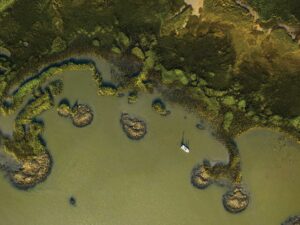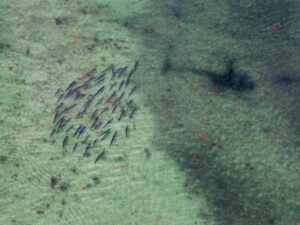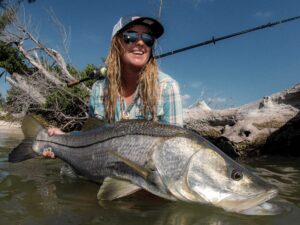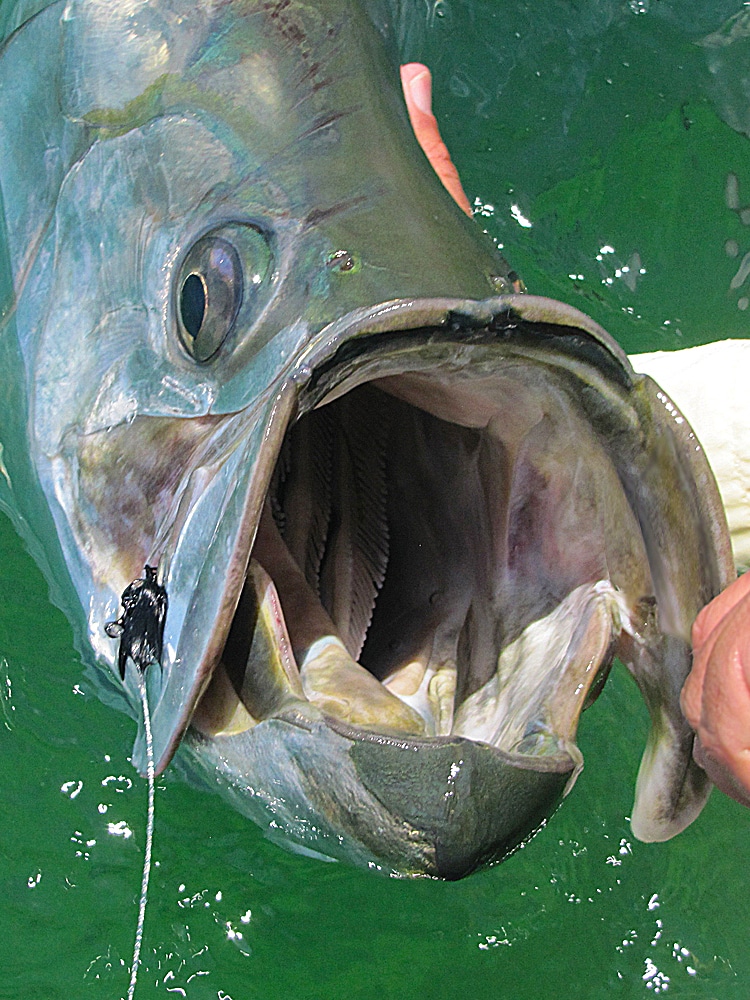
It doesn’t get much better than fly-fishing for tarpon, especially in the state of Florida. However, most tarpon encounters around the Sunshine State differ from those taking place on the shallows of the Keys and Miami’s Biscayne Bay, but fly anglers willing to explore and adjust their tactics should have little trouble tapping into terrific fly fishing action along both Florida coasts.
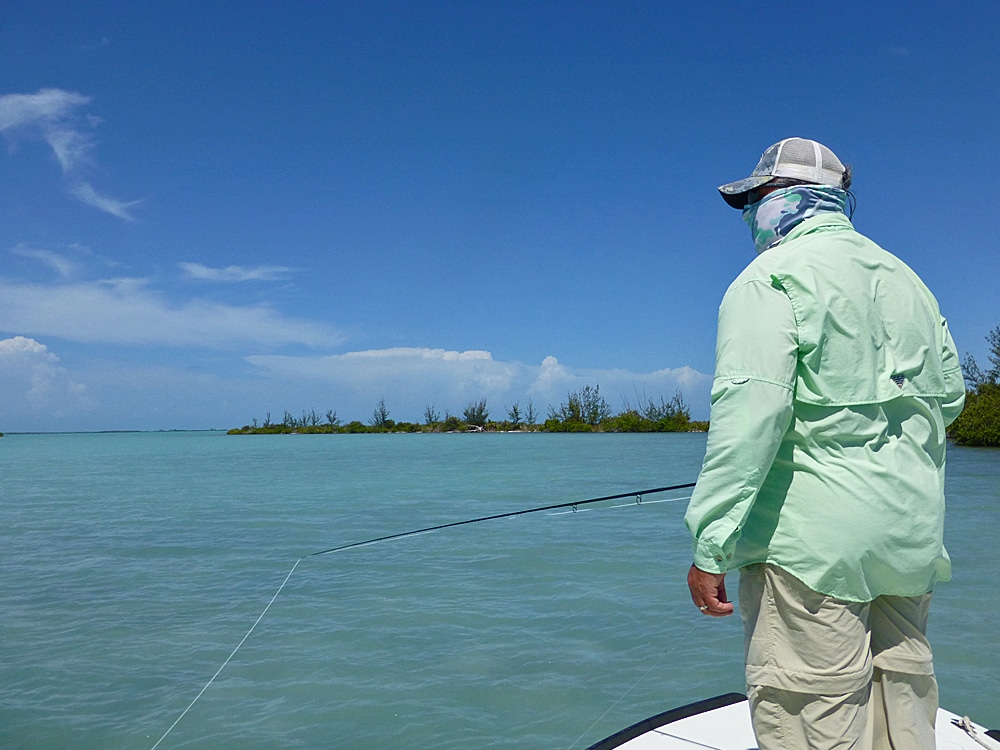
Locating Tarpon
Gulf side, in Pine Island Sound and Charlotte Harbor, where I often fish, a number of different environments provide opportunities got catching tarpon on the fly. For starters, just outside fabled Boca Grande Pass, Johnson Shoals offers an ideal, light-bottom, shallow-water intercept point, reminiscent of the Keys. Tarpon here are stalked either by poling or staking out in known travel lanes.
In adjacent Cayo Costa and neighboring Captiva and Sanibel islands, some great fly rodding for tarpon takes place along the beaches, as anglers idle slowly along the shore, usually in 8 to 15 feet of water, looking for signs of fish. When they spot a school, they switch to quieter electric power, using their trolling motor to position the boat in the path of every approaching pack or school. Because the fish here often cruise in deeper water than in other parts of both Florida coasts, fly-fishing for tarpon in these areas requires calm conditions in order to locate the tarpon, thus early mornings and early evenings, when breezes are often gentler and boat traffic is lighter, often produce the best action.
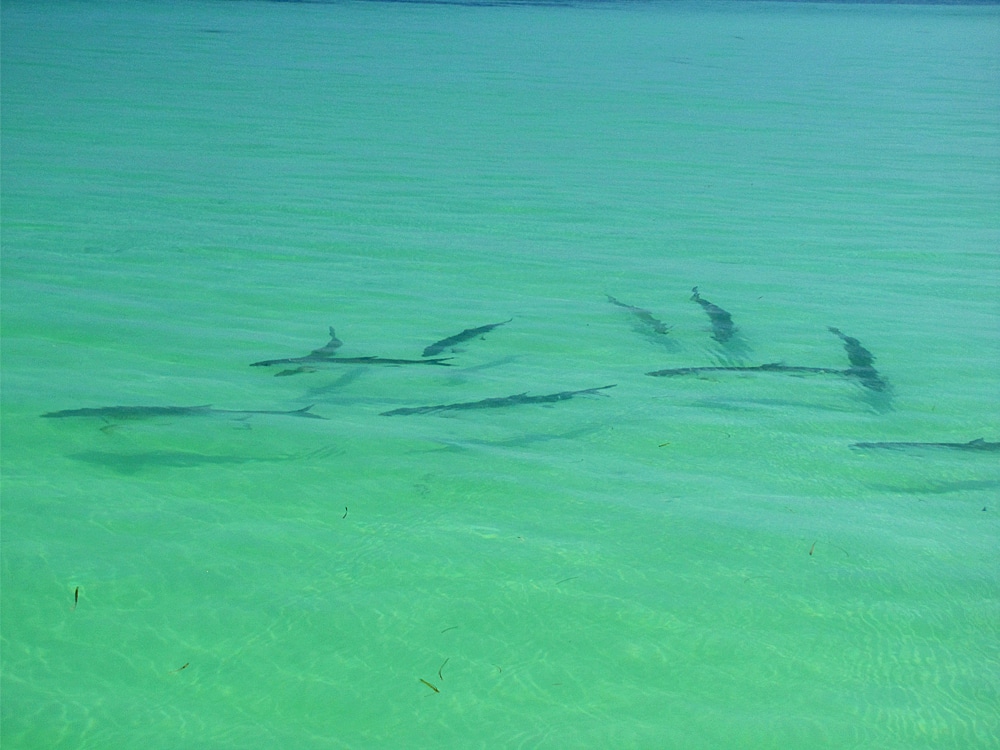
Influence of the Tides
Famous for tracing along seams and edges, tarpon frequently follow sand bars, ledges parallel to shorelines where the bottom drops slightly, and edges that divide grassy areas from sandy strips. But tides influence the movement and path of fish, so it’s critical to understand them, if you are to score consistently. Of course, a strong wind will also have an effect, especially when it pushes in the same general direction as the tide.
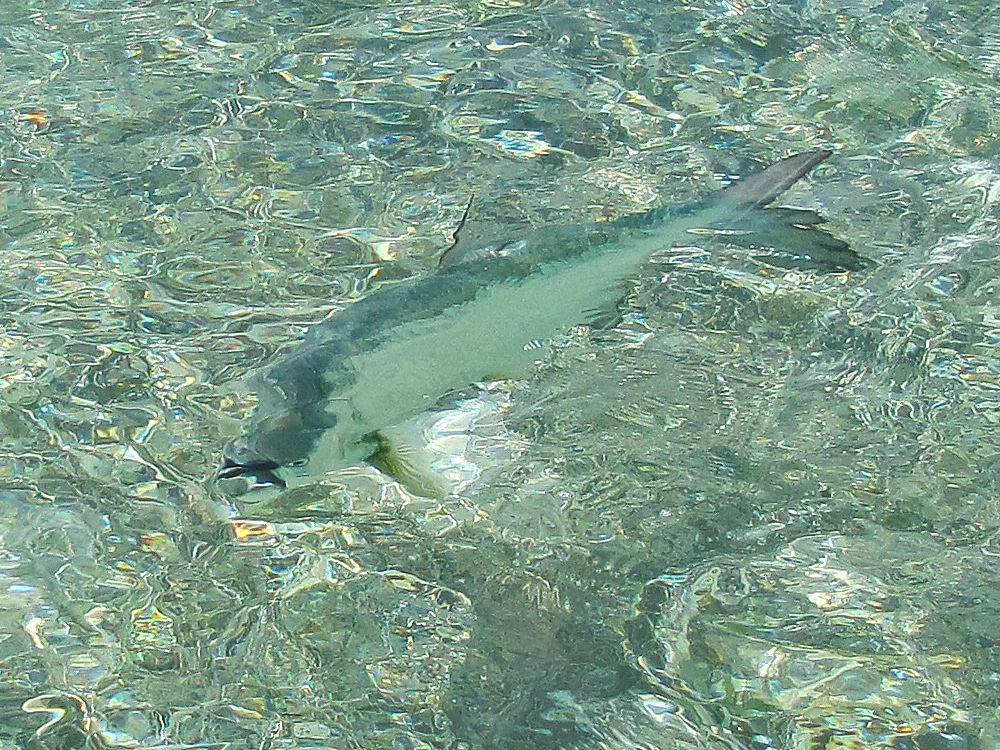
For starters, tide changes tend to get the fish moving, while the lull between tides usually signals it’s time to stay put, rest and regroup, usually in depths where tarpon feel most comfortable. During high tidal stages you often find tarpon up coastal rivers and creeks, or traveling along shoreline troughs and across various grass flats. Then, it’s also common to find fish in the backcountry, laid up in protected coves, bowls slightly deeper than the surrounding flats, or in small troughs adjacent to oyster bars. When the current is strong, often the case during full and new moon periods, some tarpon also station behind fallen trees, submerged stumps, or other structure creating eddies inside rivers and creeks. By contrast, during low water, tarpon tend to congregate at the mouths of the same rivers and creeks, cruise in channels, or travel along the deeper edges of outer flats.
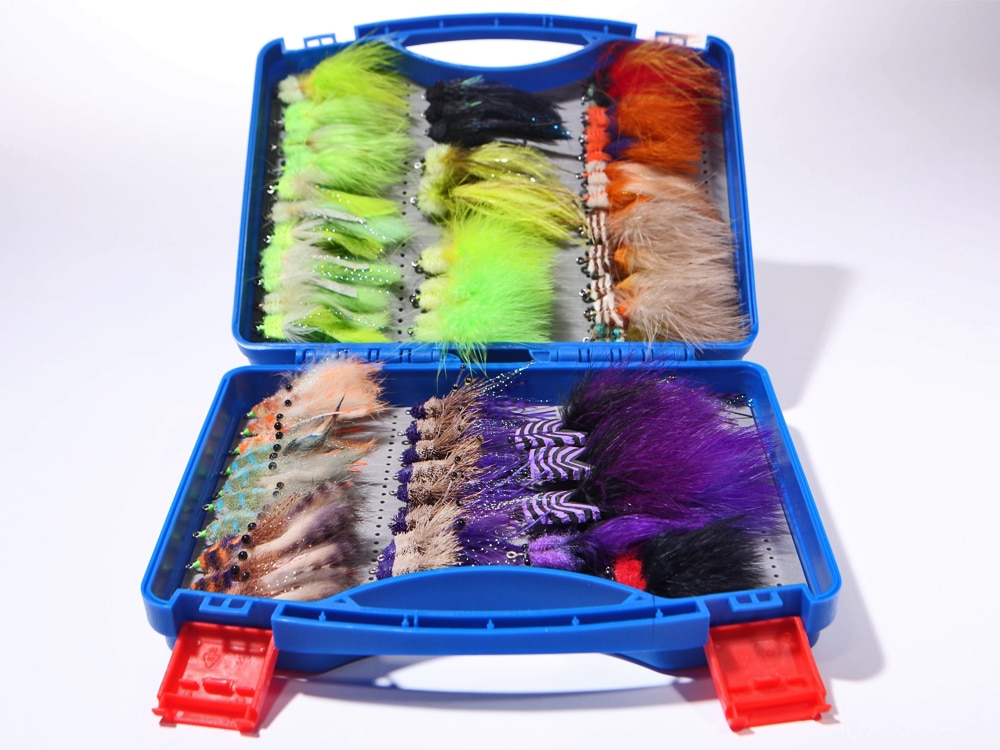
Choosing the Right Tarpon Flies
Fly-fishing for tarpon requires technique, the ability to find the fish, and the right conditions, but having the best tarpon flies at your disposal is equally important. Despite the diversity of terrain where tarpon may be found, crabs seem the almost universal favorite forage. Not surprisingly, the most effective tarpon fly patterns resemble crabs, if only remotely. Nevertheless, tarpon remain largely opportunistic feeders, and shrimp and various baitfish are also part of their diet. Sometimes, during shrimp, crab or baitfish runs, they become infuriatingly selective. That’s when the more lifelike imitations in the fly box get the nod.
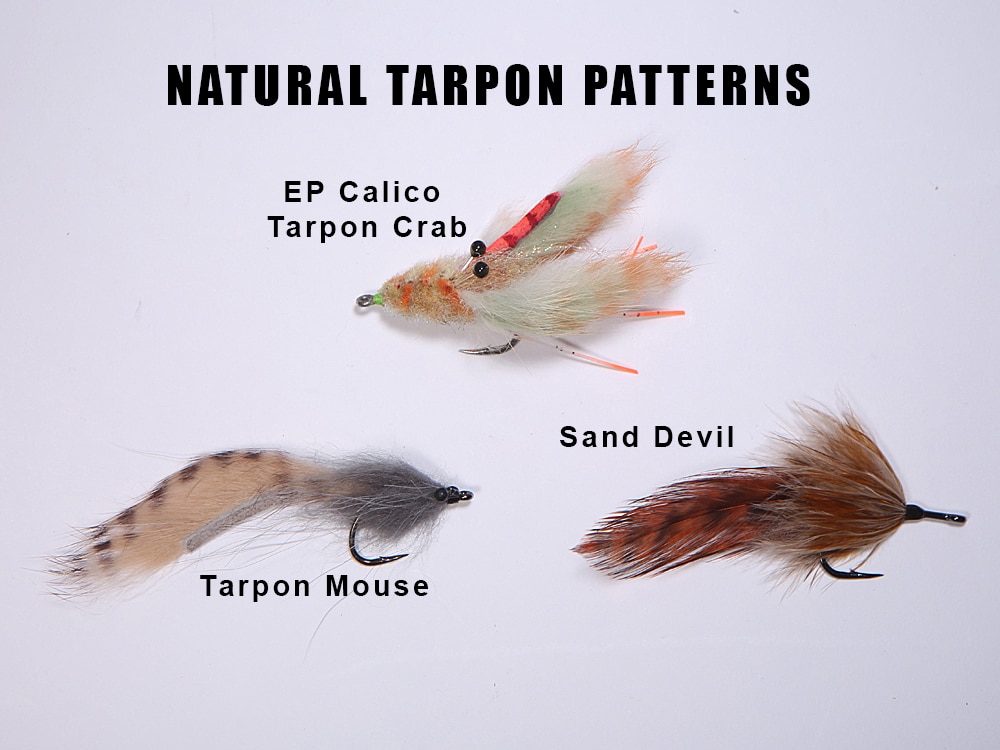
Natural Tarpon Flies
When it comes to catching tarpon on the fly and selecting a color, a good rule of thumb is to opt for natural browns and tans, perhaps with a bit of blue, orange or yellow for accent when the water is clear and sunny skies make for good visibility. The fabled Cockroach heads a lineup of popular natural patterns that also includes the Tarpon Mouse, Coker Smoker, Sand Devil, Enrico’s Everglades Minnow, Apte Too, Lenny’s Tarpon Shrimp and others.
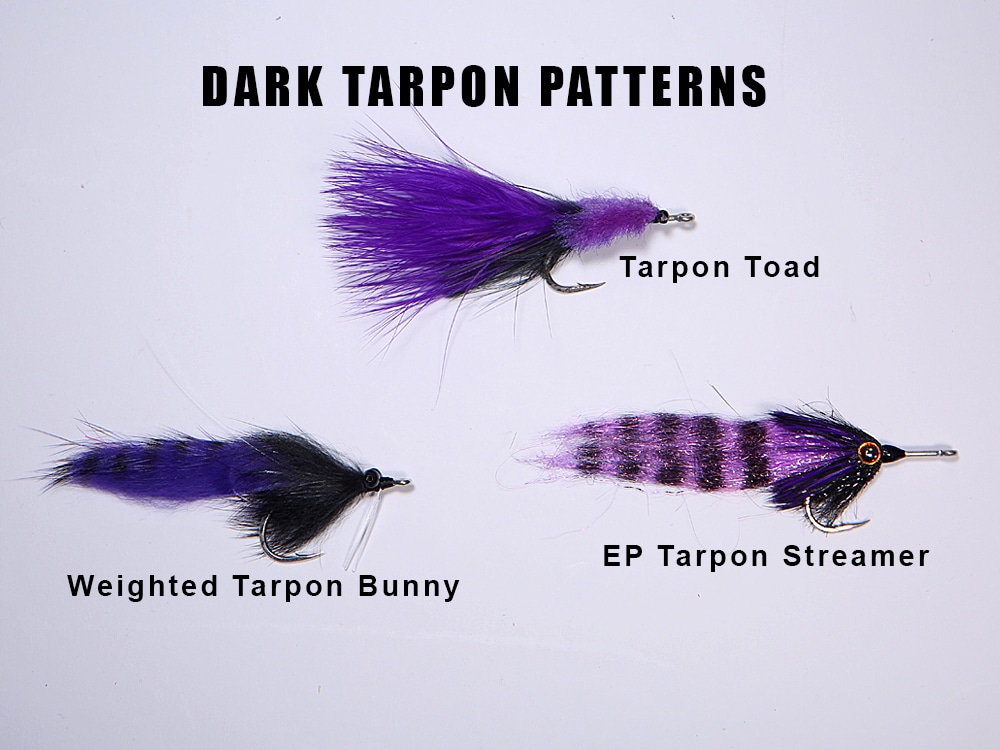
Dark Tarpon Flies
When fly-fishing for tarpon during low-light conditions — early and late in the day, or when skies are cloudy — choose dark fly patterns with black, purple and red combined with each other or with a bit of chartreuse, orange or yellow for contrast. The Black Death, Tarpon Toad in black-and-purple or black-and-red, Purple People Eater, Bloody Mary, PBJ, Halloween, and various tarpon bunnies in similar color combinations are among the most popular examples.
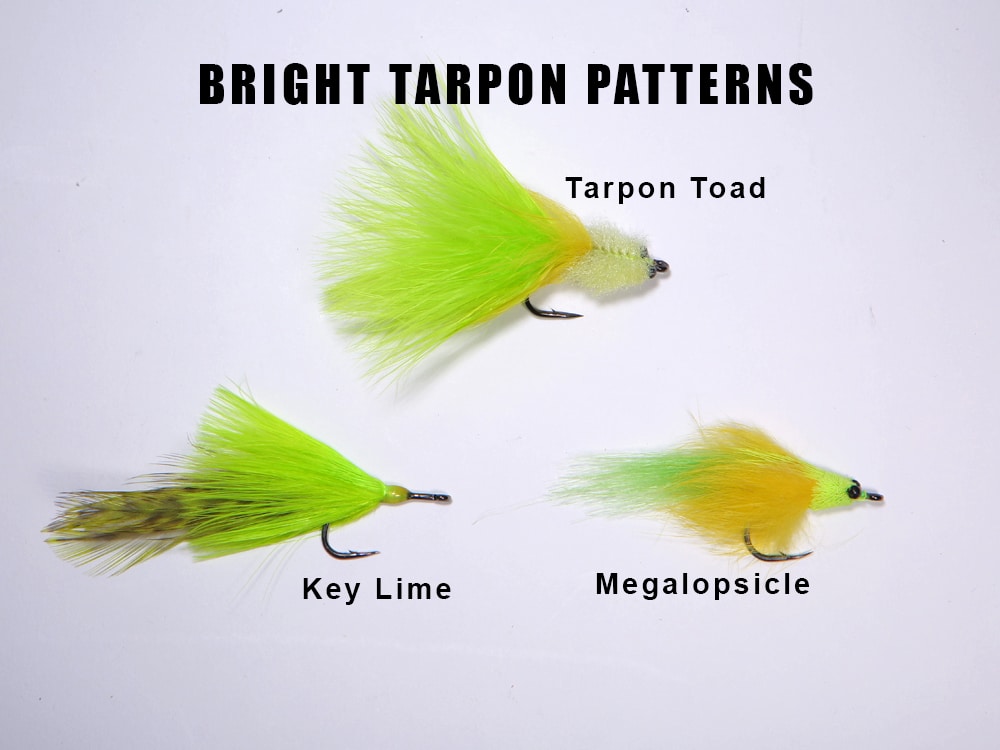
Bright Tarpon Flies
Whenever the water is murky or stained, or when fishing over grass or dark, patchy bottom, bright colors like chartreuse, orange, yellow or hot pink make the flies easier for tarpon to detect, so a chartreuse Tarpon Toad, or other brightly colored patterns like the Hot Butt, Megalopsicle, Tequila Sunrise, Golden Rita, Tangerine Dream, or Original Apte should get the nod.
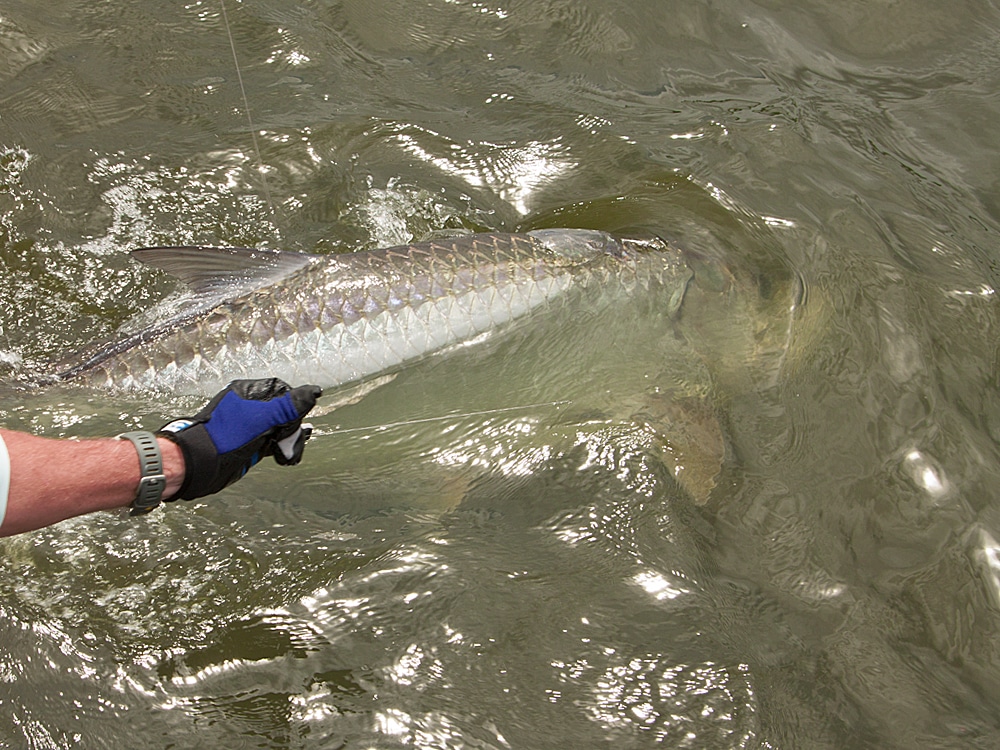
Weighted versions of the mentioned dark, natural or brightly-colored patterns come in handy in deep water situations, such as in passes, inlets, channels, and sometimes along the beaches, whenever tarpon periodically break the surface but immediately flip their tails and dip five to 10 feet down the water column.
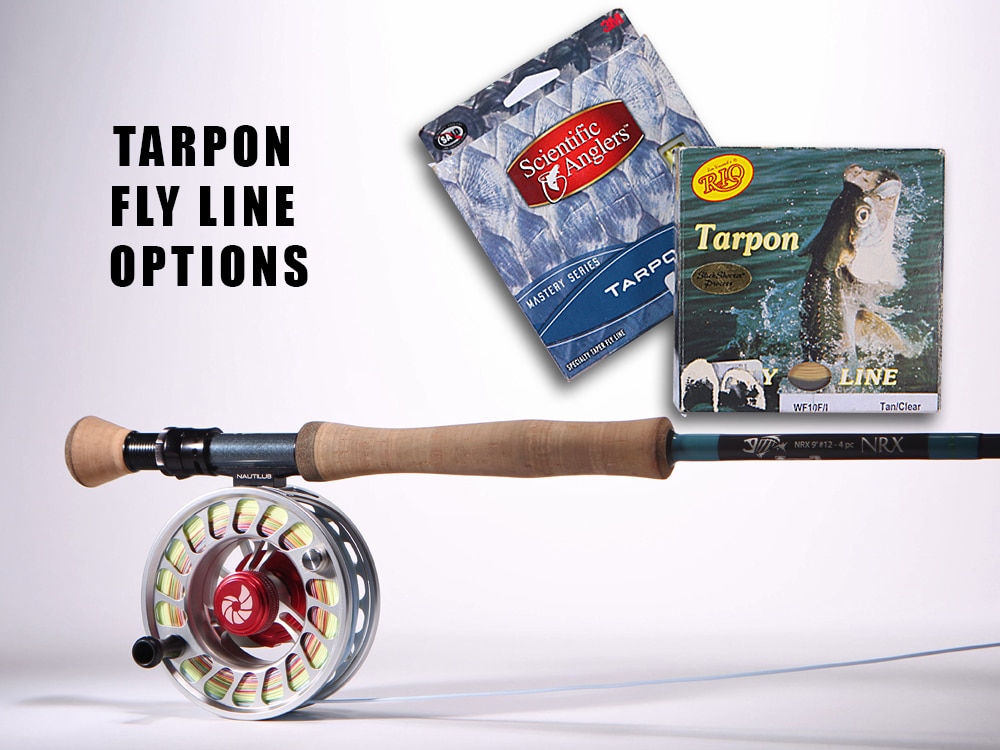
FLY LINE CHOICES
As for tackle, a 12-weight fly outfit is standard, although some anglers prefer a lighter 11-weight, or sometimes a 10-weight, when the wind isn’t howling or the tarpon targeted average 50 pounds or less. Regardless of the weight-class you favor, fly lines and leaders are both critical to your success. With tarpon, quick casts are usually a requisite, so floating, weight-forward fly lines with a short 30- to 38-foot head are best suited for the task. Overloading the rod slightly with a line one weight heavier than it calls for also helps launch fast deliveries with minimal false casting, but it makes it more difficult to carry enough line in the air for long casts.
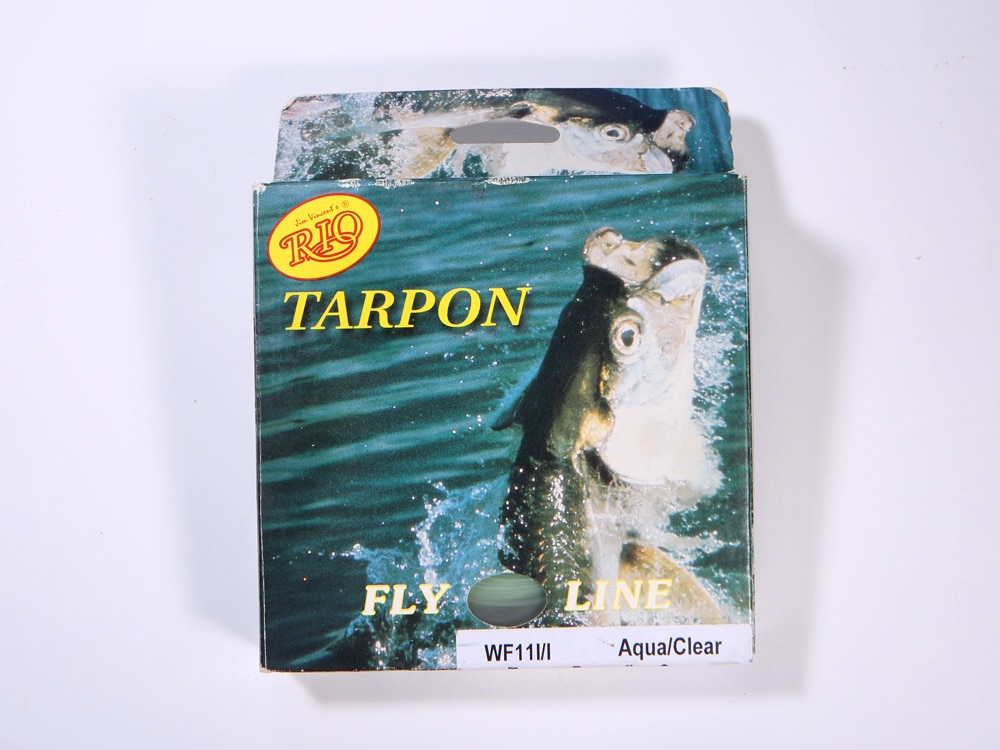
THE CLEAR DIFFERENCE
Stiff breezes are frequent on the flats, and one way to combat them is using monocore lines, which are smaller in diameter, cut through the wind well, and because they are clear and fairly invisible in the water, also permit you to shorten the leader. All monocore fly lines had an intermediate sink ratio in years past, so they were primarily used over deeper flats or in instances when floating grass interferes with floating lines. But nowadays Monic, Cortland and other brands also offer clear floating lines for those times when tarpon are ultra skittish and maximum stealth is required.
FOLLOW THE LEADER
Some Gulf Coast fly rodders count on a sink-tip or a full sinking line to present flies to tarpon in mid water, often the case in the passes or along the beaches, where the fish often gulp air briefly, then dive and cruise several feet below the surface. For sinking lines, leaders should be fairly short, 5 to 7 feet, depending on the sink rate of the line and fly. A short leader keeps the fly from riding higher in the water column than the line, which creates a pronounced belly on the fly line that hinders not only the detection of subtle strikes, but also solid hook-sets.
Floating line setups, however, typically employ longer leaders. While store-bought leaders are mostly 9-foot long, I prefer to tie my own, opting for 10-footers for clear and still conditions, and go as long as 12 or 13 feet if the fish are overly discerning or noticeably skittish. Yes, long leaders are harder to cast, but a mono or fluorocarbon butt section (40- to 60-pound) that makes up at least 50 percent of the total leader length, and matches the end of the fly-line’s stiffness, will help the leader and fly turn over with ease.


